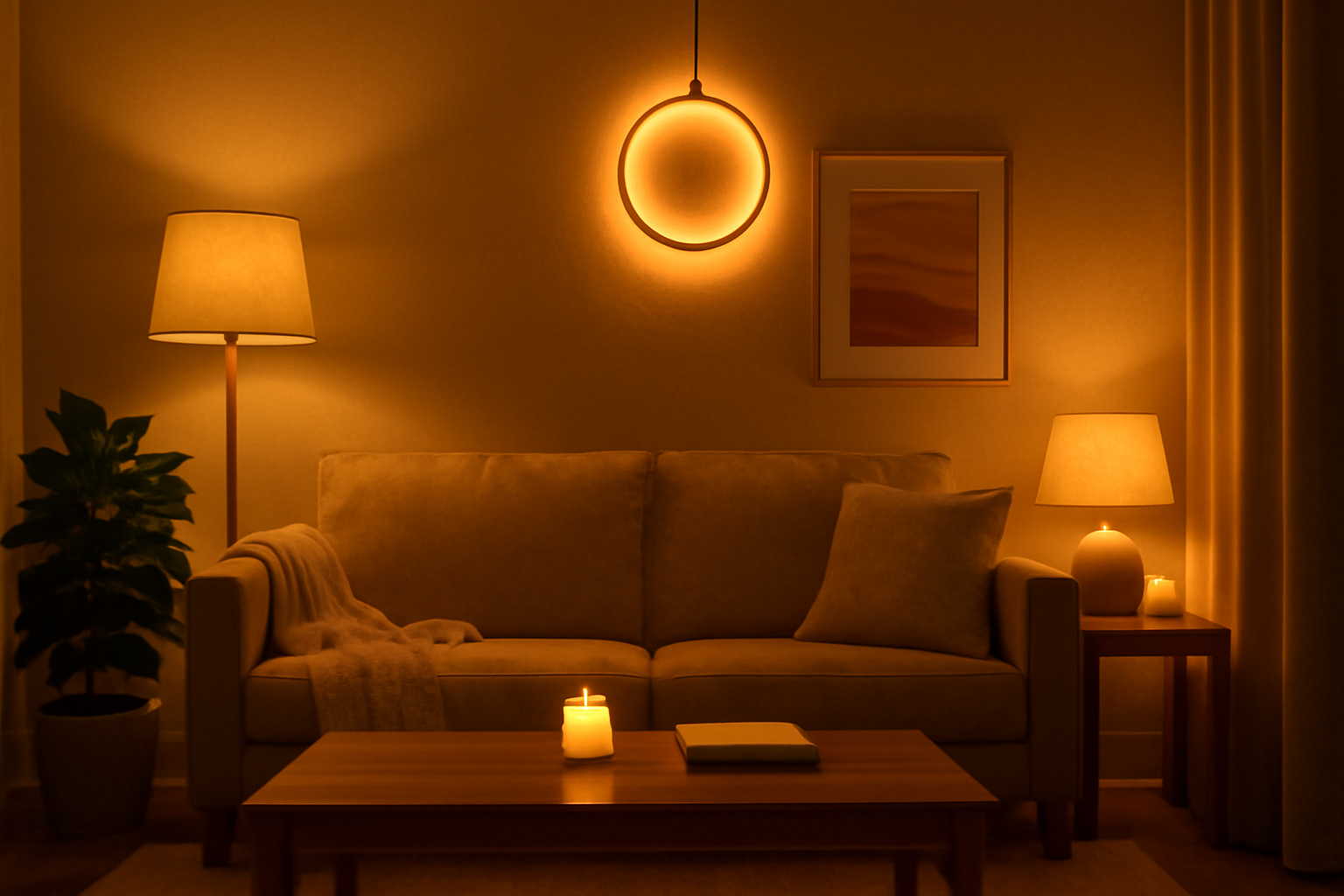Lighting is one of the most powerful tools in interior design—yet it’s often overlooked. The right lighting can instantly transform a space, set the tone for how it feels, and enhance every other element in the room. Whether you want your space to feel cozy, energetic, romantic, or calming, lighting is the key to shaping that mood.
Here’s how to use lighting intentionally to elevate your home and evoke the exact atmosphere you want.
Understand the Three Main Types of Lighting
Before you can shape mood, it’s important to understand the foundational layers of interior lighting:
- Ambient Lighting (General Light)
This is the main source of light in a room—usually overhead lighting like ceiling fixtures, recessed lights, or chandeliers. It sets the base level of brightness. - Task Lighting (Functional Light)
Used to illuminate specific areas for activities like reading, cooking, or working. Think of desk lamps, under-cabinet lights, or bathroom vanity lighting. - Accent Lighting (Mood and Highlighting)
Adds depth and drama to your space by spotlighting art, architecture, or decor. Includes track lighting, uplights, wall sconces, or LED strip lighting.
A well-designed room will include all three types to provide flexibility and richness.
Choose the Right Bulb Temperature for the Mood
Light bulbs come in different color temperatures, which dramatically affect the ambiance.
- Warm White (2700K–3000K): Yellowish glow that feels cozy, relaxing, and inviting. Perfect for living rooms, bedrooms, and dining areas.
- Neutral White (3500K–4000K): Balanced light that mimics daylight without being too harsh. Ideal for kitchens, bathrooms, and workspaces.
- Cool White or Daylight (5000K–6500K): Bluish-white light that feels energizing and clinical. Useful for basements, garages, and detailed tasks.
Warm lighting creates comfort. Cool lighting increases alertness. Choose based on the mood you want.
Use Dimmers to Add Flexibility
Installing dimmer switches is one of the easiest and most effective ways to control mood. They allow you to adjust brightness throughout the day and shift the atmosphere from vibrant to mellow.
Benefits:
- Create romantic, low-light dining scenes
- Soften bedroom lighting before bed
- Adjust brightness based on natural light levels
Dimmers can be added to overhead lights, sconces, or even smart bulbs controlled via app or voice.
Layer Multiple Light Sources
Instead of relying on a single ceiling fixture, layer multiple light sources throughout the room.
In a living room, for example:
- Use a chandelier or flush mount for ambient light
- Add table lamps for reading or cozy evening vibes
- Use a floor lamp to brighten dark corners
- Highlight a piece of art with a spotlight or picture light
Layering makes the space feel dynamic and responsive to different needs.
Use Lamps to Add Warmth and Personality
Table lamps and floor lamps are functional and decorative—they contribute to mood and style.
Tips:
- Choose fabric or frosted shades for soft, diffused light
- Position lamps in pairs or clusters for symmetry and balance
- Select lamp bases and shades that match your decor aesthetic
Lamps can instantly make a room feel more lived-in and comfortable.
Incorporate Accent Lighting for Atmosphere
Accent lighting helps you draw attention to specific areas and build a feeling of depth.
Ideas:
- LED strip lights under kitchen cabinets or bookshelves
- Uplights behind plants, sculptures, or furniture
- Recessed spotlights aimed at a gallery wall or textured surface
- Neon signs or ambient backlighting in entertainment zones
Accent lighting gives rooms a polished, high-end look while adding mood.
Use Lighting to Define Zones
In open-plan homes, lighting can help define areas without physical dividers.
For example:
- Hang pendant lights over a dining table to carve out the eating area
- Use a floor lamp to anchor the living room seating zone
- Install under-shelf lighting to distinguish a workspace or kitchen prep zone
This technique helps organize the space and create intentional flow.
Change the Mood with Light Color
Smart LED bulbs allow you to change the actual color of light, not just its temperature. This opens up a world of creative possibilities.
For example:
- Soft pink or amber for a romantic feel
- Blue or purple for a calming, dreamy environment
- Bold colors like red or green for parties or holidays
Using a smart lighting system, you can program color themes for different times of day or occasions.
Reflect Light for a Brighter Feel
Mirrors and reflective surfaces can multiply the impact of your lighting.
Tips:
- Hang mirrors opposite windows to bounce natural light
- Use mirrored furniture or glossy finishes to reflect light
- Choose metallic light fixtures that shine even when the bulb is off
This technique is especially useful in small or dark rooms.
Use Lighting as a Statement Piece
A dramatic light fixture can become the focal point of a room—and set the tone before anything else.
Examples:
- A modern chandelier over a dining table
- A sculptural pendant light in an entryway
- A retro floor lamp with a distinctive silhouette
Even when turned off, the right fixture speaks to your design style.
Final Tips to Master Lighting Mood
- Use smart plugs or timers to automatically adjust lighting at sunrise or sunset
- Avoid overhead-only lighting—balance it with side lighting for softness
- Consider candlelight or lanterns to add a natural, flickering glow
- Don’t forget outdoor lighting—porch lights, path lights, and string lights extend ambiance to the exterior
Light Up Your Life—Intentionally
Lighting isn’t just about visibility—it’s about emotion. With the right combination of bulbs, fixtures, and placement, you can shift your room from productive to peaceful, dramatic to dreamy, or energizing to intimate.
Design with lighting in mind, and you’ll not only see your space in a whole new light—you’ll feel it, too.
